Agile works very well in a product-oriented environment. It’s understandable, as Agile Manifesto as a key document of whole Agile stresses the functional product as one of the most important values.
When implementing agile practices, Product development is very often reduced to:
- Description of responsibilities for Product Owner role,
- Request recording,
- Maintenance of backlogs,
- and, maybe, the planning process.
It is, in my opinion, just a set of steps which should follow the hard work on Product Vision, proceeded by mapping of problems and needs of prospective clients. To make clear we’re implementing the right stuff. To be sure it’s worth going through the pain of any development.
Well, Vision and Strategy. But Who?
 Product Owners are often nominated according to the ability to record requirements and translate them to the language of both the client and development team. They are seldom experienced with building the product. They haven’t burned themselves working on their own product.
Product Owners are often nominated according to the ability to record requirements and translate them to the language of both the client and development team. They are seldom experienced with building the product. They haven’t burned themselves working on their own product.
Product-oriented development needs the man/woman who:
- thinks more business than tech,
- knows how to communicate and negotiate with clients,
- knows the domain of the target business. He/she might work in that segment,
- can map the market and competitors. Knows the competing products,
- can actively listen,
- is not afraid to ask not pleasant questions,
- is courageous enough to say NO to the client. Because this game is not purely about the client itself, but the client‘s clients.
- Has a strong sense for the products. He/she might believe in the product as the only one, but he must show it strong enough for the team to support him. At least to give it a try. At least one.
- is not afraid of failure and is not afraid to admit it. He/she can analyze it and learn from it.
- knows to set up the right goals
- prefers experiments rather than planning.
- is well oriented in the start-up world and entrepreneurship. The advantage could be if he/she knows something from the story of Jeff Bezos, Steve Jobs, Bill Gates, Richard Branson, Elon Musk. Just very few from POs have a soul of an entrepreneur. And it’s pity for the team as it’s lacking the motivation and energy that could come from it.
Besides the POs also business and marketing and development people should participate in product strategy. Well, we are talking about the multidisciplinary team again. Obviously, not all developers are necessary from the very beginning. But later, when foundations are set, all team members should be engaged. To gain the feeling „it’s our product“.
Tools for Building Strategy and Vision
Besides traditional business plans, typically required by investors, there are also newer and more interesting approaches out there:
- business model canvas,
- lean canvas,
- impact mapping,
- empathy map,
- personas.
Business Model Canvas
Business model canvas is basically a one-page document summarizing core attributes of the potential business. From the client, partners on one side to value proposition, revenue stream, and expenses on another.
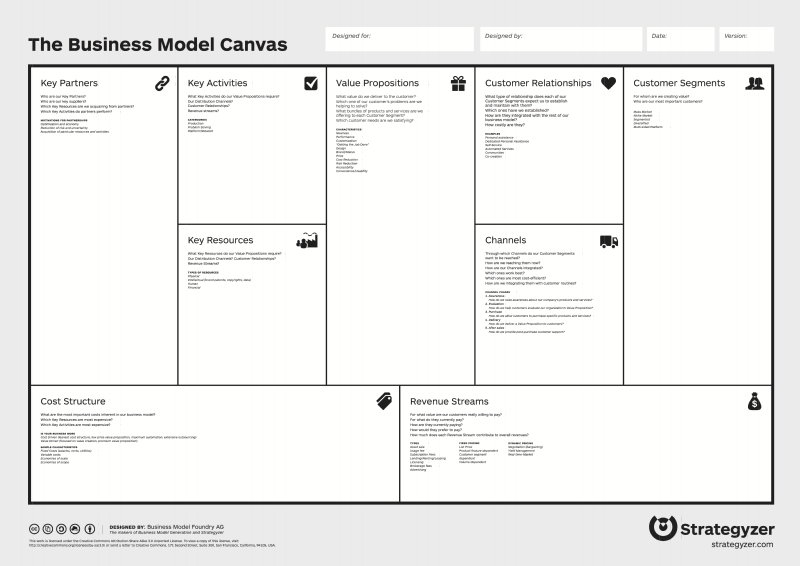
This technique is explained in the book: Alexander Osterwald: Business Model Generation: A Handbook for Visionaries, Game Changers, and Challengers.
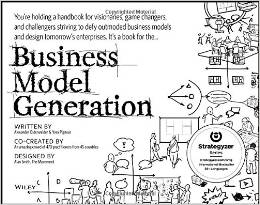
Check the following video demonstrating mentioned method in a practical context.
Value Proposition Design
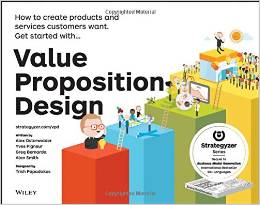
The first step in business modeling should be to dive deep into the everyday life, problems, and values of prospective clients. This is the entrepreneurial aspect of Agile – focus on the client first, all the features after that.
The value proposition is a tool for creating the content of Customer Segments a Value Propositions in the business model canvas.
Correctly identified values are the key for following parts of the vision. Don’t be afraid to invest your time into this part of the process. We’re talking about a measure of days here.
Not a long time ago we were helping the team with key market segment identification and stakeholder identification. Discussion about segment selection itself took about a whole day. But it was worth every minute of it. The next day, the team was able to describe five roles in a given segment. It takes time because the discussion is very intense. An experienced facilitator can be very important in sense of helping keep the focus of the team to the given activity.
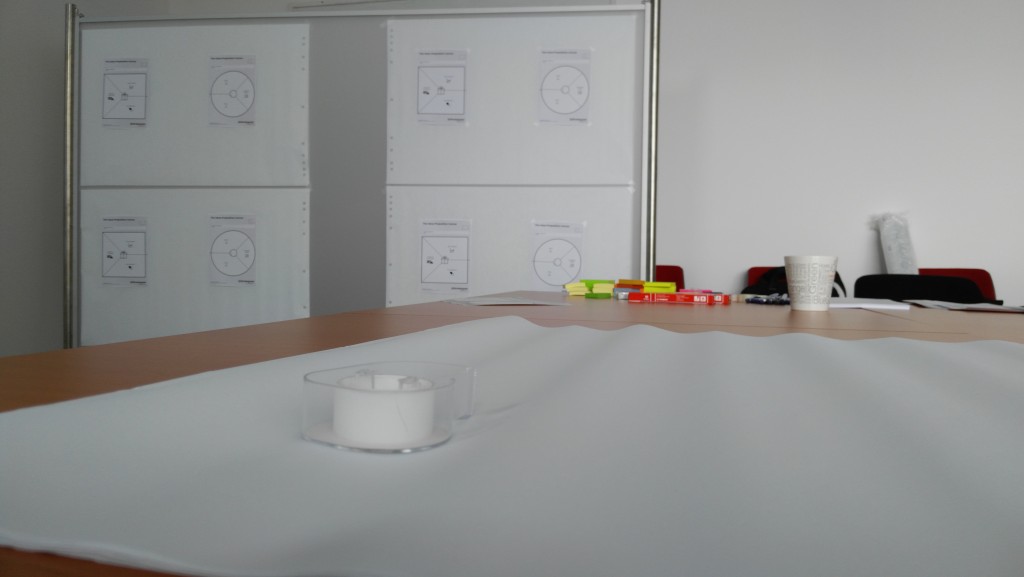
In the following step, every role is described in detail from the perspective of:
- activities a job,
- the pain of the role,
- gain,
- the cure for pain,
- what can support the gain/profit,
- what product offers for a given role.
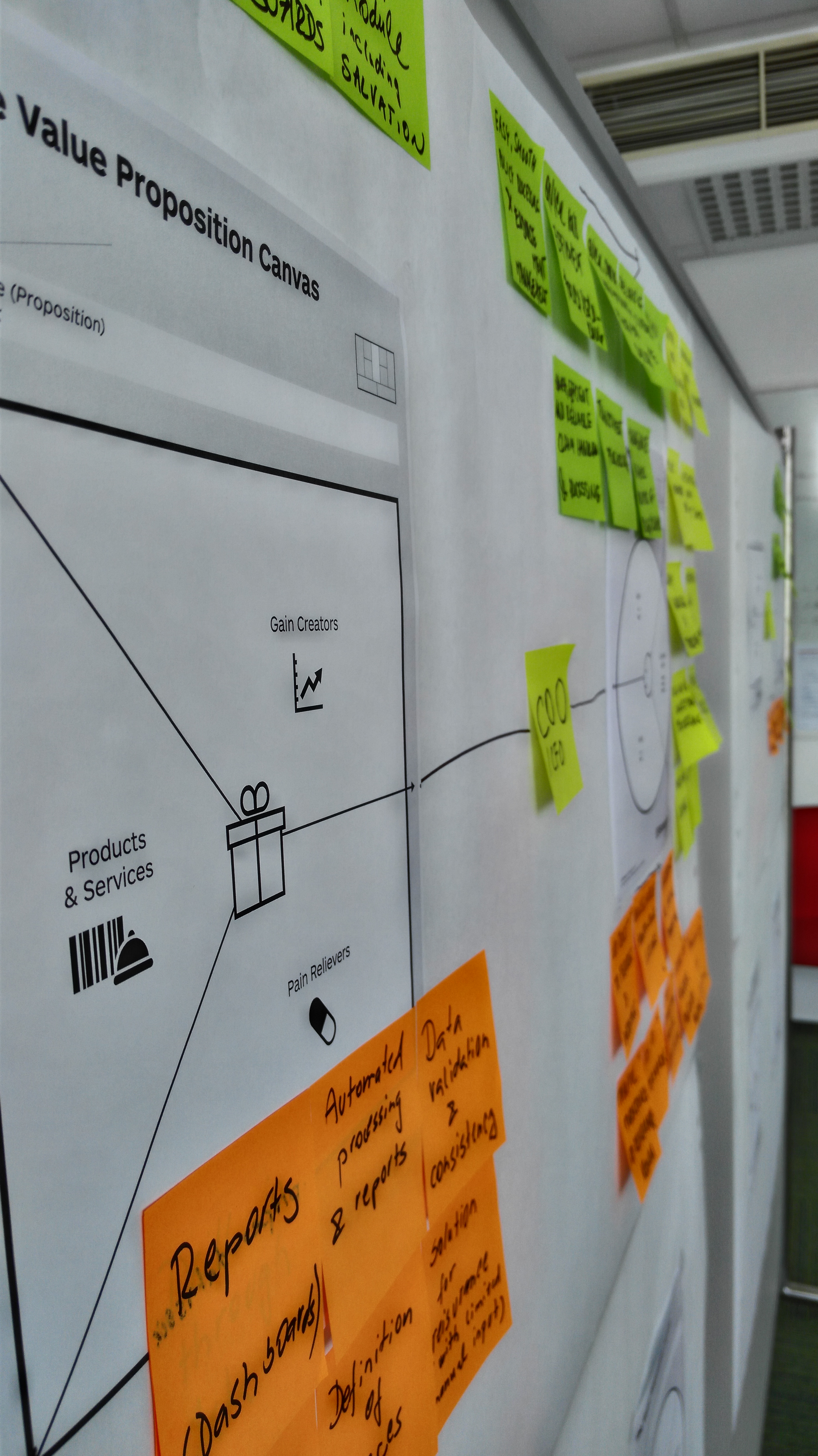 |
 |
The best way how to get ready for that is to interview stakeholders and potential clients. You can very easily slip into the „virtual world“ and you’ll think you understand the life of the role but to virtual, not a real one. You need to meet the real person who can explain to you what he/she really needs or expects in that role. Very often good salesperson or marketing specialist can help with that.
After identification of all the pains and advantages for the client, you can proceed to prioritization. You are not going to cure all the pains. Not all potential advantages you will want to offer, at least not from the very beginning. Therefore you need to focus on a few key features. You rather experiment if your idea works, and move forward after confirmation…
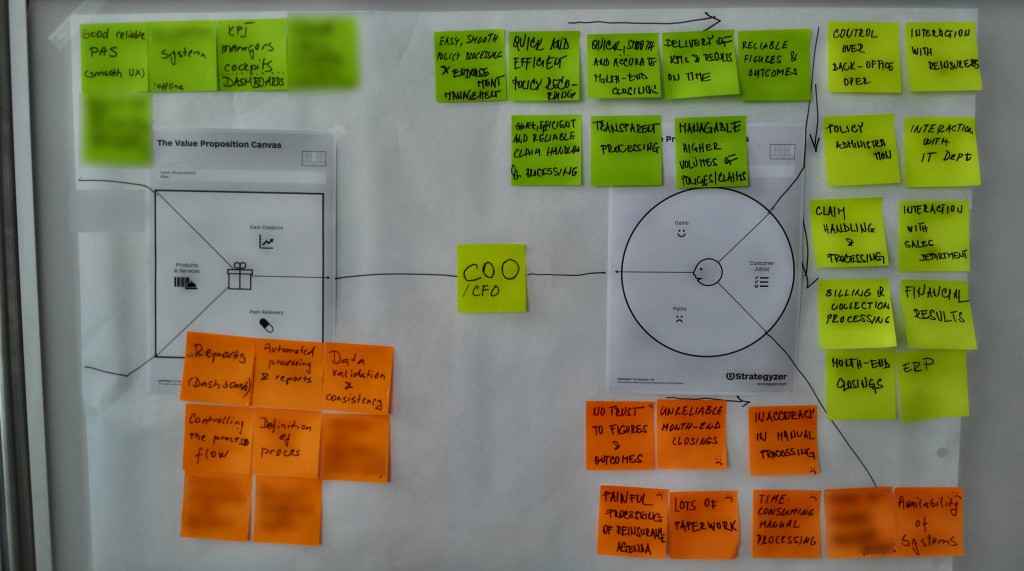
Value Proposition Design is time-consuming, but the most important part of the business model canvas. We’ll deal with the other parts in the next article.
Note. Pictures are taken during a real workshop of B2B product for the financial institution
Do you want to learn more or try it with your product?
Write us: support@scrumdesk.com
